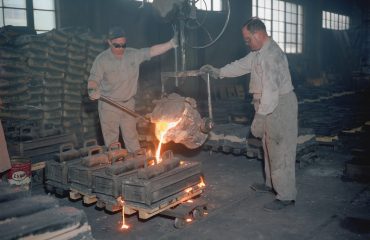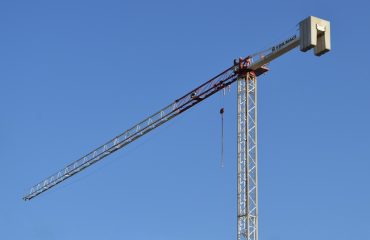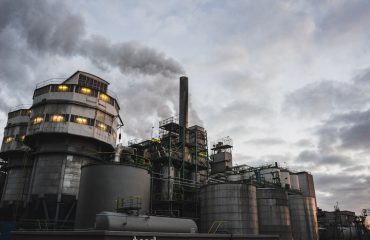Steel. The backbone of modern infrastructure, a symbol of strength and resilience. But its applications extend far beyond skyscrapers and bridges. This post delves into compelling case studies demonstrating the versatility and innovative solutions steel provides across various industries.
1. Skyscrapers: Reaching New Heights with Steel’s Strength
The construction of skyscrapers presents unique challenges: immense weight, wind resistance, and seismic activity. Steel’s high strength-to-weight ratio makes it the ideal material for constructing these towering structures. Consider the Burj Khalifa, the world’s tallest building. Its intricate steel framework, meticulously engineered and assembled, allows it to withstand extreme weather conditions and seismic forces. The use of advanced steel alloys, incorporating high-strength low-alloy (HSLA) steels, ensured optimal performance and minimized material usage. The complex design required precise calculations and sophisticated computer modeling to optimize the steel structure’s load-bearing capacity and ensure stability. This case study highlights steel’s crucial role in pushing the boundaries of architectural design and engineering.
2. Bridges: Spanning Gaps with Steel’s Durability and Flexibility
Bridges, whether spanning vast rivers or connecting bustling city streets, rely heavily on steel’s durability and flexibility. The Golden Gate Bridge, an iconic symbol of San Francisco, is a prime example. Its suspension design, employing high-tensile steel cables and a robust steel deck structure, showcases steel’s ability to withstand immense loads and dynamic forces. The bridge’s longevity is a testament to the material’s resistance to corrosion and fatigue. Furthermore, advancements in steel manufacturing, including techniques like weathering steel (Corten steel), have enabled the creation of bridges requiring less maintenance and exhibiting enhanced aesthetic appeal. The case of the Millau Viaduct in France, another engineering marvel, further emphasizes the use of high-strength steel in long-span bridge construction, demonstrating steel’s capacity to overcome significant geographical challenges.
3. Offshore Structures: Steel’s Resistance in Harsh Marine Environments
The offshore oil and gas industry operates in some of the most challenging environments on Earth. Steel’s exceptional corrosion resistance (when properly protected) and ability to withstand immense water pressure make it the preferred material for offshore platforms and pipelines. These structures are subjected to constant battering from waves, currents, and extreme weather. The design and construction of these platforms necessitates the use of specialized steel alloys, often incorporating protective coatings and cathodic protection systems to mitigate corrosion. Case studies of offshore platform construction highlight the intricate engineering required to ensure structural integrity and safety in these demanding environments. The development of advanced welding techniques and quality control measures is also paramount to ensure the longevity and reliability of these crucial steel structures.
4. Automotive Industry: Steel’s Lightweighting and Safety Innovations
The automotive industry constantly seeks to improve vehicle safety and fuel efficiency. Steel plays a vital role in achieving these goals. Advanced high-strength steel (AHSS) grades offer superior strength and formability, enabling the creation of lighter and safer vehicle bodies. These steels allow for the design of stronger yet lighter car frames, reducing fuel consumption without compromising safety. Case studies showcasing the use of AHSS in vehicle design highlight the material’s contribution to improved crash performance and enhanced occupant protection. The use of tailored blank technology, combining different steel grades in a single component, further optimizes weight reduction and strength distribution. This demonstrates steel’s continuous evolution and adaptability to meet the demands of a rapidly changing automotive landscape.
5. Infrastructure and Transportation: Steel’s Role in Sustainable Development
Beyond individual structures, steel plays a critical role in broader infrastructure projects. Railways, pipelines, and large-scale construction projects rely heavily on steel’s durability and cost-effectiveness. Steel’s recyclability also contributes to sustainable development goals. Case studies examining the lifecycle assessment of steel structures demonstrate its environmental advantages compared to other materials. The use of recycled steel in construction reduces the demand for virgin materials, minimizing environmental impact. Moreover, steel’s strength allows for the construction of longer-lasting infrastructure, reducing the need for frequent replacements and associated resource consumption. This makes steel a crucial component in building sustainable and resilient infrastructure for future generations.
In conclusion, these case studies illustrate the remarkable versatility and enduring strength of steel across a wide range of applications. From towering skyscrapers to robust offshore platforms, steel continues to be a cornerstone of modern engineering and innovation.
SEO Tags:
Steel Case Studies, Steel Solutions, Engineering Case Studies, Steel Construction, Structural Steel




